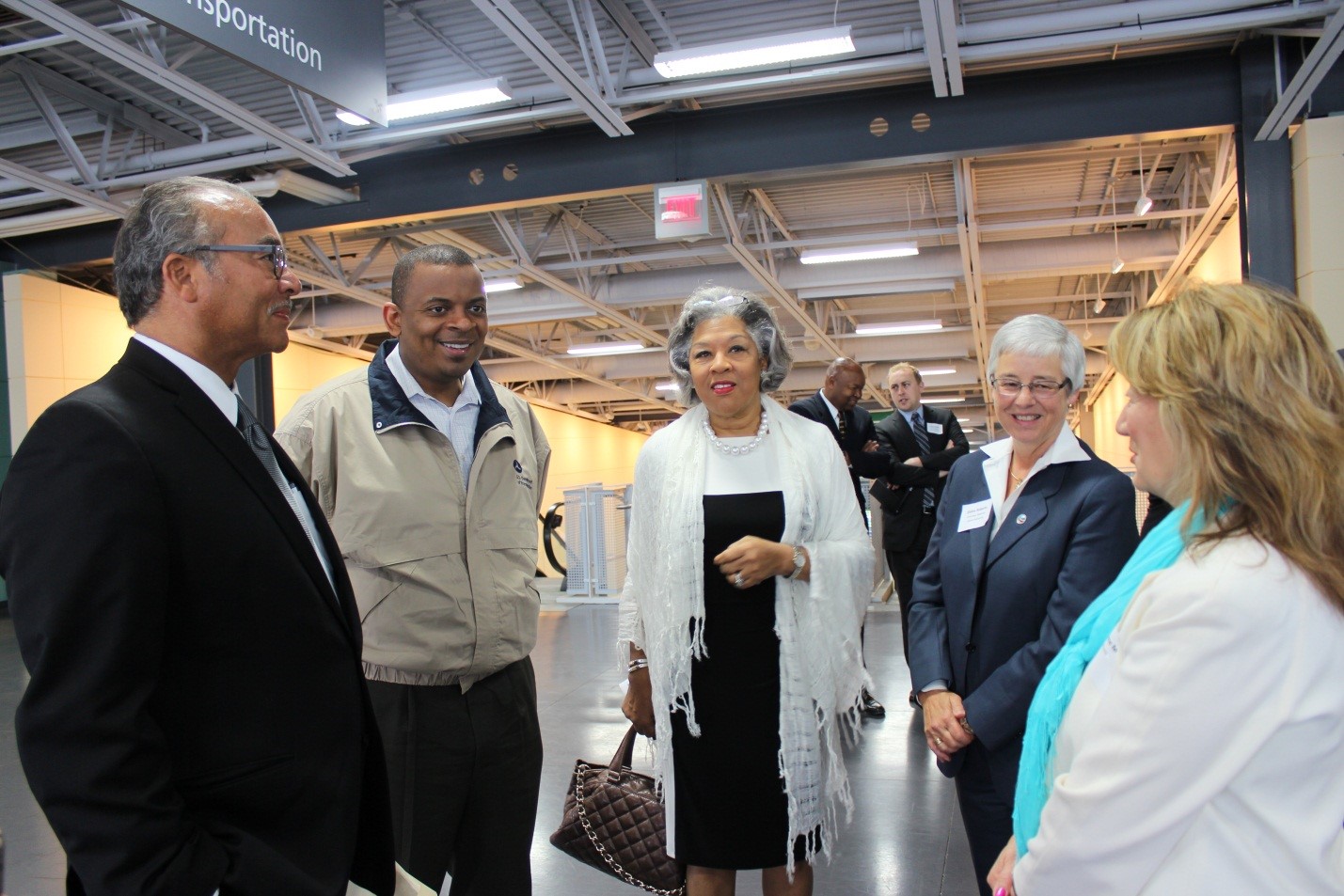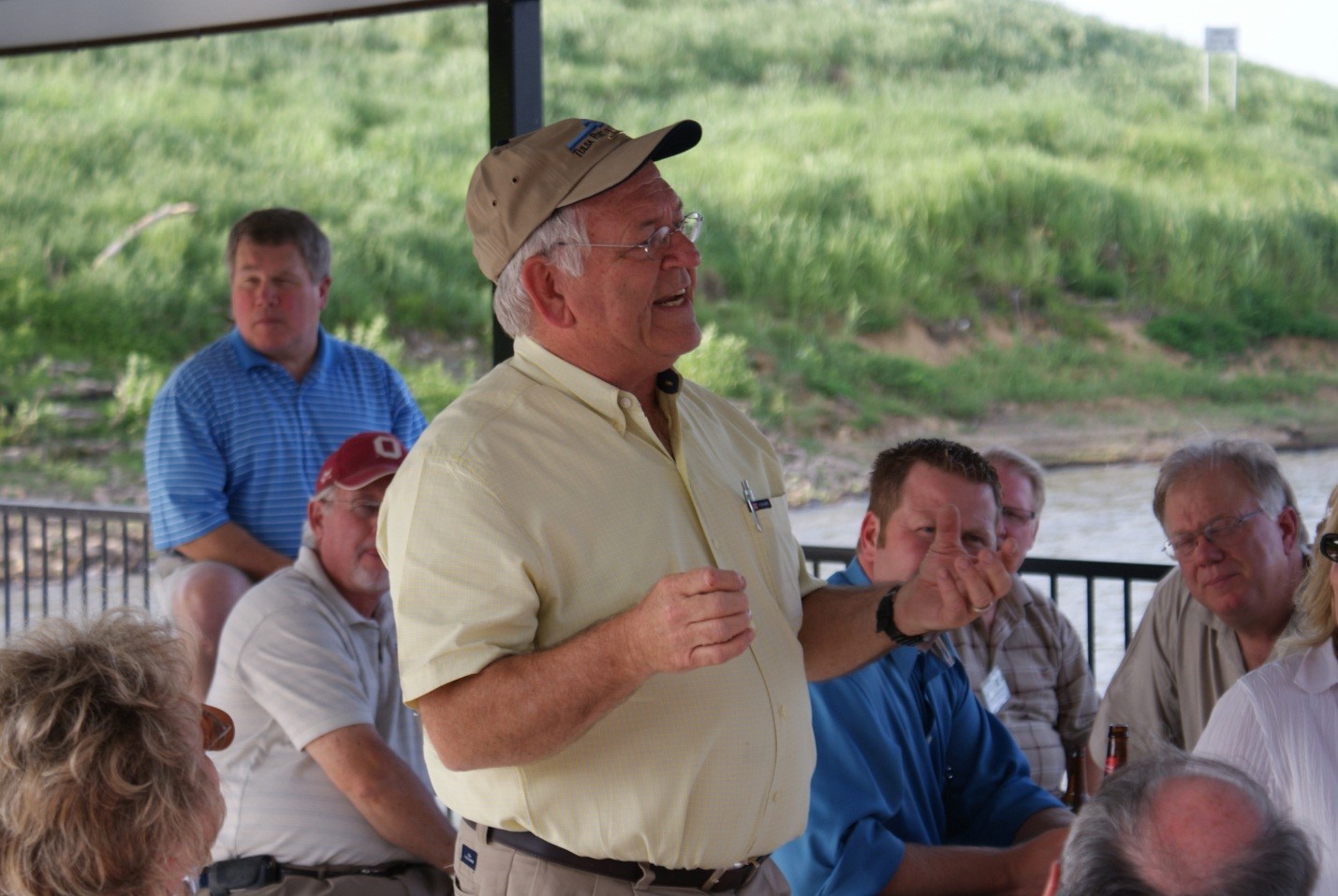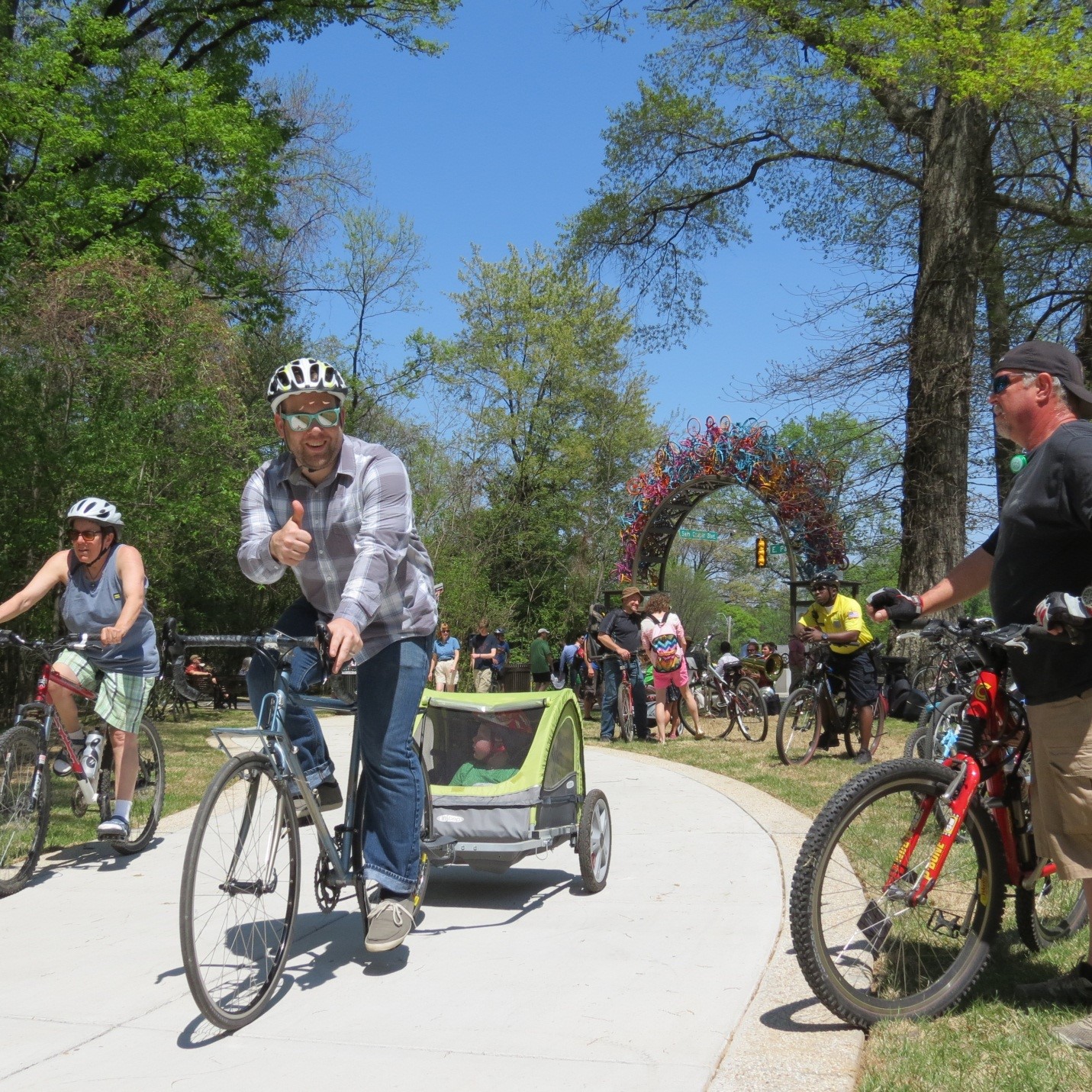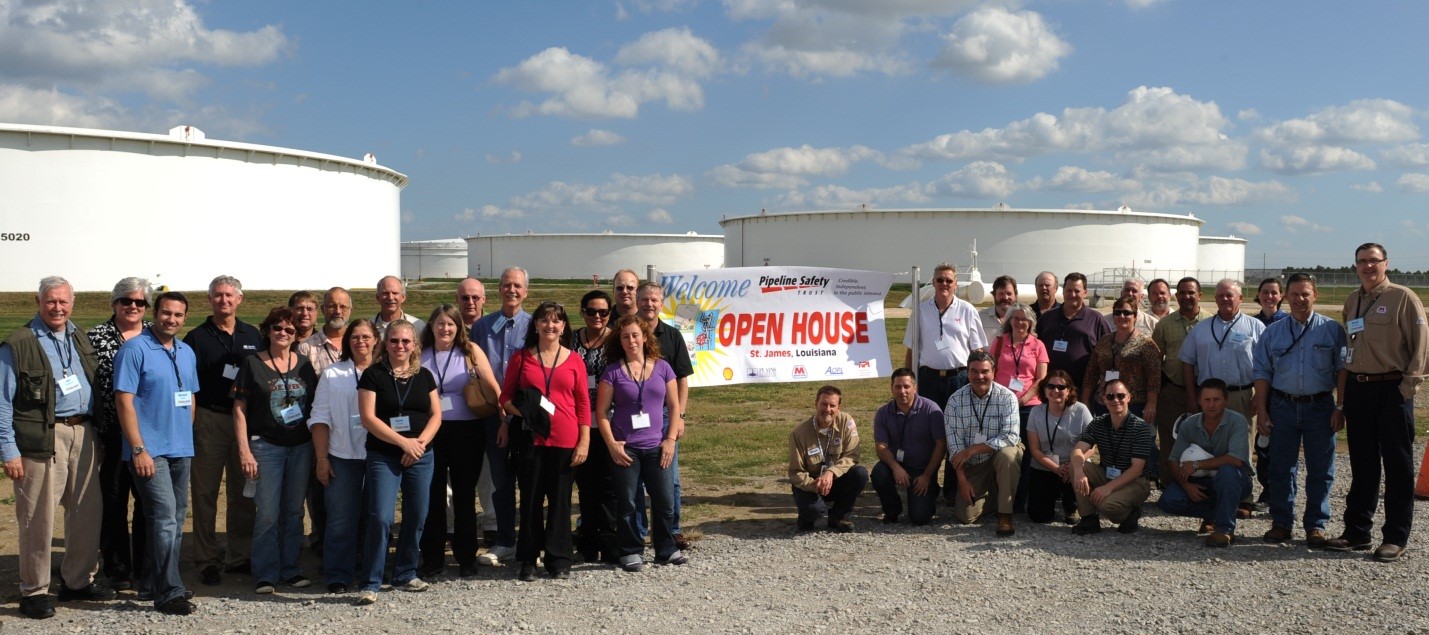
Last Tuesday, U.S. Department of Transportation Secretary Anthony Foxx and the White House honored 11 individuals as White House Transportation Champions of Change for their exemplary leadership and innovation in transportation. The event brought together individuals from across the country, various modes of transportation, and unique backgrounds. Champions spoke of their passion and dedication to their work, which in no small part are the types of innovative solutions required to usher in a 21st century transportation system that is truly safe, accessible, and equitable.
To examine the trends and choices facing America’s transportation infrastructure over the next three decades, the Department of Transportation issued a draft report, Beyond Traffic, earlier this year. The report predicts that there will be 70 million more residents in America by 2045, a 45% increase in freight volume, demographic shifts in rural and urban areas, and frequent extreme weather events that will continue to strain the nation’s existing infrastructure. The report also predicts increased gridlock nationwide unless changes are made in the near-term. Tuesday’s event honored 11 individuals who have recognized these challenges and have endeavored to solve them.
To underscore the progress transportation innovators are making to address the country’s future transportation needs, “Beyond Traffic: Innovators in Transportation for the Future” was selected as this year’s theme.
The Department of Transportation is currently engaging transportation users, developers, owners, and operators in metropolitan areas throughout the country to engage them in an interactive conversation about America’s transportation infrastructure challenges and potential policy considerations.
Jeff Zients, National Economic Council Director and Assistant to the President, kicked off the program by congratulating the 2015 class of White House Transportation Champions of Change and emphasizing that each of their contributions to transportation have set standards for the future.
Several Department of Transportation senior officials also recognized the Champions for their achievements. In addition to Secretary Foxx, Deputy Secretary Victor Mendez, Under Secretary for Transportation Policy Peter Rogoff, Federal Highways Administrator Greg Nadeau, National Highway Traffic Safety Administrator Mark Rosekind, Pipeline and Hazardous Materials Safety Administrator Marie Therese Dominguez, Federal Motor Carrier Safety Acting Administrator Scott Darling, and Senior Counselor to the Secretary Stephanie Jones participated in Tuesday’s program.
Before the event, the Champions shared their reflections with us:
Atorod Azizinamini
Very soon, the average life of the nation’s more than 610,000 bridges will exceed 50 years – the lifespan for which most were designed. Add to this the fact that about 25% of our bridges are deficient and need repair or replacement. A good number of these bridges are in rural areas, and are relatively short, less than 60 feet long. The cost to society for replacing or repairing these bridges is significant and goes way beyond the cost of labor and material needed for the bridge itself-Interruption to traffic, reduced mobility and safety hazards created by onsite construction activities. As you might guess, a delay in replacing or repairing bridges will cost society even more.
While challenges abound, opportunities to build the next generation of bridges should be welcomed. We need to build bridges that last longer and eliminate onsite construction, while being economical. One of the major initiatives to develop novel and innovative technologies is the U.S. DOT’s University Transportation Center (UTC) initiative. In 2013, U.S. DOT selected Florida International University (FIU) as the location of one of 20 Tier One UTCs devoted to Accelerated Bridge Construction. We, in the Department of Civil and Environmental Engineering of FIU’s College of Engineering and Computing, are working with our partner universities to design and construct the next generation of bridges.
We have developed and successfully implemented the revolutionary folded plate steel bridge system that allows the replacement of short span bridges in a matter of days. We have also developed the most comprehensive guidelines for enhancing the service life of existing and new bridges.
We are also educating the workforce capable of building these bridges. On a monthly basis, we educate more than 4,000 bridge professionals. Our goal is to continue to develop novel ideas and solutions to effectively address challenges facing the nation’s bridges.
Atorod Azizinamini, Ph.D., P.E., is Professor, Chairperson and Director of the Accelerated Bridge Construction University Transportation Center in the Department of Civil and Environmental Engineering in the College of Engineering and Computing at Florida International University.
Marilyn Bull
As a pediatrician, I have dedicated my life to the health and wellbeing of children. The children of the world are our future and our responsibility extends beyond just providing health care to ensuring that all facets of children’s lives are nurturing and safe. For wellbeing, every child requires caring adults, good health, appropriate education and a safe environment in which to live.
We have reduced the mortality rate for most causes of childhood death but motor vehicle crashes remain the most common cause of death and injury to children after the first year of life. Child safety seats and seat belts are known to significantly reduce the risk. Making certain that every child, including children with disabilities, is as safe as possible in the family car, school bus and ambulance has been a career long goal.
Success in promoting child passenger safety has come from working with amazing colleagues. Success has come from teamwork with educational colleagues at the American Academy of Pediatrics, Safe Kids Worldwide and the National Child Passenger Safety Board, engineers and manufacturers, government and legislative colleagues.

I could never imagine when I founded the Automotive Safety Program at Riley Hospital for Children at Indiana University Health over 34 years ago that it would become one of the most comprehensive transportation resources for children in our state and nationally and internationally for children with special needs.
Many challenges remain to provide best protection possible for all children on the highways. Globally we must address an ever increasing rate of highway deaths and at home the special vulnerabilities of children on our highways provide continued challenge.
Teamwork is the key to achieving these goals. Nurturing and organizing colleagues, promoting research and education is critical. Every pediatrician, every CPST and every law enforcement and administrative colleague are our real Champions for Change, saving lives one car seat at a time.
Dr. Bull is a neurodevelopmental pediatrician at Riley Hospital for Children at IU Health, Indianapolis, Indiana.
Habib Dagher
The Advanced Structures and Composites Center at the University of Maine is a world leader providing research, education, and economic development encompassing material sciences, manufacturing and engineering of composites and structures.
One of our signature research and development projects, the composite arch bridge system, rapidly and sustainably addresses one of the nation’s largest transportation challenges: aging infrastructure.
The system, now approved in the AASHTO code, is a lightweight, corrosion resistant system for short to medium span bridge construction using FRP composite arch tubes that act as reinforcement and formwork for cast-in-place concrete. Composite arch bridges have been built in less than two weeks, including removing the existing structure – this means less road closures and traffic diversions.

In recognition of the composite arch bridge system technology and the efforts of our research team, we received the 2011 Charles Pankow Award for Innovation by the American Society of Civil Engineers (ASCE), the 2011 Engineering Excellence Awards by the American Council of Engineering Companies (ACEC), and the 2010 Most Creative Product Award by the American Composites Manufacturers Association (ACMA).
The Composite Arch Bridge System, commonly known as Bridge-In-A-Backpack, has been used in 18 bridges in the US and beyond. Advanced Infrastructure Technologies, a privately held company, is licensed by the University of Maine to produce these bridges.
This technology accelerates bridge construction time, reduces life cycle costs, has received top industry recognition, and is a shining example of knowledge transfer to private sector and a valuable innovation to the transportation industry.
Dr. Habib Dagher is Director of the University of Maine Advanced Structures and Composites Center and Professor of Civil/Structural Engineering. 
Elaine Roberts
Organizational and regional growth occurs when collaborative partners create and execute strategic plans. Such is the environment in the Columbus, Ohio region that has driven development at Rickenbacker International Airport.
Rickenbacker is a joint use military-cargo airport that historically had large operating deficits. Rickenbacker is now profitable, due largely to a decision to diversify and pursue developments not traditionally managed by airports. We formed a public-private partnership with Norfolk Southern Railroad to seek federal funds to develop a train/truck intermodal terminal on airport property. Additionally, we partnered with a private real estate joint venture to develop a 1600-acre, logistics centered industrial park at Rickenbacker. The Airport Authority also assumed responsibility for the Fixed Base Operation, which provides fueling and ground handling services to airlines and other users.

The biggest challenge in creating these partnerships and achieving financial success involved engaging many different stakeholders and getting them to buy into the vision. Rickenbacker is located in two counties with many small communities surrounding the airport. Everyone eventually came to understand that they would all benefit more by partnering and collaborating. Today, Rickenbacker is a large economic engine for our 11-county Columbus region. There are over 20,000 jobs and an annual economic impact of over $2.8 billion generated by Rickenbacker.
A great example of community collaboration with the private, public and non-profit sectors is the Columbus Partnership, which is an organization of over 50 CEOs. I sit on that board and also work closely with Columbus 2020, the regional economic development entity that participates in joint business development efforts for the Rickenbacker Inland Port. These partnerships are so important and help engage many stakeholders for the common good. This is the part of my position that inspires and motivates me the most—making a difference by helping create strategic opportunities for businesses and economic growth for the region.
Elaine Roberts is the President and CEO of the Columbus Regional Airport Authority.
Nathaniel Ford, Sr.
When I started in the transportation industry decades ago, my primary goal was to learn as much as possible about the transportation industry and the operational /technical aspects of running a complex system like the New York MTA. This goal was closely followed by my passion for providing essential transportation for our city’s commuters and transit dependent bus and rail riders. Given my families’ legacy in transportation beginning with my father, I gained an early appreciation of the importance of transportation to a city (and its economic development) and its citizens, whether it be for the purpose of getting to work, school or to the doctor.
When I came to the Jacksonville Transportation Authority (JTA), I found the system’s road and highway programs met the necessary standards, but the transit network – our hours of operation, scheduling, route structure and amenities – did not. The Jacksonville community deserved better today, not tomorrow or next year, so we developed the Route Optimization Initiative (ROI) to give the system the first, 360-degree overhaul in recent history.
We brought the JTA system up to 21st Century standards by making bus service more frequent, direct, and reliable. Hours of operation were extended on evenings and weekends and bus stop shelters and signage were enhanced. Technology was added to give customers real time information on their cell phones about when the next bus will arrive so they can better plan their day.
Although the ROI was about service changes, the heart of the initiative was about people. We listened to what they needed in the public transit system to make their commutes more pleasant. We responded with comprehensive changes that resulted in reliability that will help stimulate economic development by providing a robust, world-class transportation network that customers can depend on and enjoy riding.
Nathaniel P. Ford, Sr., is CEO of the Jacksonville Transportation Authority in Jacksonville, Florida.
Olatunji Oboi Reed
The journey for me started about ten years ago, born out of a personal crisis.
I started riding a bicycle consistently as an adult around 2005. I was 30 years old and struggling with severe clinical depression. During this time, I was experiencing a level of emotional pain so intense, an escape route was the only thing I could think about. One day, as I sat on my couch on the Southside of Chicago, crying in the dark, I summoned the will to explore an alternative to taking my own life. I felt my final option was to try bicycling as a healthy escape from my pain.

Some days later, I found myself on Chicago’s lakefront trail at 63rd street beach on a beautiful summer morning. I mounted the bike, took a deep breath, and started to ride. What started as a simple bike ride soon set into motion my most transformative journey. It was in this moment that I became a cyclist and everything inside of me changed. Biking was becoming an effective tool in my toolkit to address my depression. I know unequivocally that cycling has significantly improved both my mental and physical health. And, I am alive today, in part, as a result of that bicycle ride on Chicago’s lakefront trail over a decade ago. This knowledge fuels my current efforts to bring the many benefits of cycling to others in our communities.
Jamal Julien and I co-founded the Slow Roll Chicago bicycle movement in September of 2014. We ride bikes to make our neighborhoods better. This is why we exist and this is why we ride. Slow Roll Chicago’s mission is to connect a diverse group of people to utilize bikes and the activity of cycling as vehicles for social change, transforming lives and improving the condition of our communities, by organizing community bicycle rides. Our vision is equal bicycle usage across the City of Chicago with respect to race, income, and geography.
May the journey continue, let’s ride!
Olatunji Oboi Reed is the President and Co-Founder of Slow Roll Chicago.
Peter Lagerwey
I have had the unique privilege of working with the wonderful people in Seattle since August 1st, 1984, when I moved to Seattle after graduate school to take a job with the Seattle Engineering Department. I moved to Seattle, in part, because I wanted to live in a community that placed a high value on civic life, social justice and a willingness to take risks and try new things. I have not been disappointed, having met and worked with many amazing people. Some highlights:
- Participated in a group that preserved rail corridors when they were no longer needed for rail purposes; resulted in one of the first comprehensive urban trails systems.
- Worked with local transportation officials and neighborhood groups to develop the concept of Complete Streets and Road Diets; resulted in multiple streets being reconfigured to accommodate all modes, providing more transportation choices.
- Led a team that created one of the first comprehensive programs for installing ADA compliant ramps; resulted in Seattle winning awards for its leadership.
- Member of a group that developed public housing for homeless vets; resulted in more than a dozen vets finding permanent housing.
- Worked with others to help pass two levies; resulted in millions of dollars be spent on preserving open space and constructing miles of trails.
- Currently working with the City of Seattle to design and construct a comprehensive network of cycle tracks in the downtown area.
Peter Lagerwey is the Regional Office Director for Toole Design Group.
Robert Portiss
I believe accessible waterway transportation is vital to the current and future economic prosperity of our nation. It is much cheaper to transport many commodities by water than by other means, and there are thousands of jobs along our nation's inland waterway system that are either directly or indirectly supported by our maritime industry. I also believe that it will be difficult, if not impossible, for our nation's highways and rail lines to handle the volume of international trade that is projected to double over the next decade. The only realistic solution is more utilization of our nation’s inland waterway system for cargo transportation needs.

Therefore, throughout my career, I have been an advocate for inland waterways issues at both the state and national level for not only the McClellan-Kerr Arkansas River Navigation System (MKARNS) but all of the navigable waterways of the U.S. Some of my goals include ensuring that all of our citizens -- in my state and across the country -- understand how important waterway transportation is. I am also bringing attention to the fact that if we do not repair and preserve the infrastructure on our nation's waterways, we will lose them and the economic benefits they provide.
Robert Portiss is the Port Director for the City of Tulsa-Rogers County Port Authority that manages and operates the Tulsa Port of Catoosa.
James Sayer
Every year motor vehicle crashes claim thousands of lives. In fact in the U.S. motor vehicle crashes are the leading cause of death of people under 35 years old. Last year alone there were over 30,000 fatalities. Our current transportation system is responsible for $240 billion per-year cost in terms of medical and work loss. Connected vehicles, similar to what we have deployed in Ann Arbor, Michigan could reduce up to 80% of unimpaired crashes.
The University of Michigan, along with our partners in government and industry, has made significant investments in the advancement of intelligent transportation, including connected and automated vehicle technologies. In 2012, we were the test conductor site for the U.S. DOT funded Connected Vehicle Safety Pilot Model Deployment, the largest connected vehicle pilot in the world. Over three years this research project generated over 120 billion basic safety messages, representing more than 35 million miles driven, and 5 million trips. The Ann Arbor Connected Vehicle Test Environment will take us from “research” to “real world deployment.” Ann Arbor will be the world’s first example of how connected vehicle and infrastructure technology can and will be utilized in a community of the future.
In addition, we recently opened Mcity, another first of its kind. Operated by the U-M Mobility Transformation Center, Mcity is the world's first controlled environment designed specifically to test the potential of connected and automated vehicle technologies that will lead the way to mass-market driverless cars.
I believe that the transformation to a connected and automated mobility system will be a game changer for safety, for efficiency, for energy, and for accessibility. The work we are doing at the U-M will open the door to 21st century mobility.
James Sayer, Ph.D., is a Research Scientist and Head of the Human Factors Group at the University of Michigan Transportation Research Institute.
Kyle Wagenschutz
Memphis now has more than 200 miles of dedicated bicycle lanes, trails, and neighborhood routes which have visible successes in communities across the city. Trends on daily bicycle use continue to increase, while the rate at which crashes are occurring are on the decline. More than 140 miles of new bicycle-oriented infrastructure is now under design and is expected to be completed by 2017. As a result, Bicycling magazine named Memphis the “Most-Improved City for Cycling,” in 2012, and in 2015, Memphis was officially designated a Bicycle Friendly Community by the League of American Bicyclists.
Recent completion of the Memphis Pedestrian and School Safety Action Plan establishes a new vision for the construction of a quality pedestrian realm. Utilizing a number of data-driven measures, this plan prioritizes $200 million in pedestrian improvements over the next twenty years. Upon completion, it will ensure all children in Memphis have safe, convenient, and accessible routes for walking to school.

Several landmark projects are currently underway. These include the Harahan Bridge, a bicycle/pedestrian bridge crossing the Mississippi River into Arkansas, the Hampline, a two-way protected cycle track connecting Overton Park to the Shelby Farms Greenline, several additional miles of the Wolf River Greenway, a 22-mile shared-use path currently under construction – sections open today are receiving 180,000 annual users, and Explore Bike Share, a public bike share system currently under development with around 60 stations and 600 bikes that will connect the city's downtown, midtown and surrounding neighborhoods.
Efforts to improve conditions for bicycling and walking continue to be a work in progress in Memphis. Nonetheless, recent success has established a new paradigm for transportation. In its not dissimilar cultural, political, and socioeconomic environment, the City of Memphis plays an important role in setting an example for many other US cities to follow.
Kyle Wagenschutz is the Bicycle/Pedestrian Program Manager for the City of Memphis, Tennessee.
Carl Weimer
In 1999, I was blissfully unaware of the pipelines that ran through my community in Bellingham, Washington. Then in a split second a pipeline burst and dumped nearly a quarter million gallons of gasoline into a salmon stream that our community had spent hundreds of thousands of dollars and countless volunteer hours to clean up and restore. That gasoline flowed nearly two miles down that stream until it exploded and burned killing three boys playing in a park and every living thing in that salmon stream. That is how my community learned about the pipelines in our midst, and that while we all enjoy the benefits of the fuel those pipelines carry, pipelines also bring serious safety issues that were not being adequately addressed by the pipeline industry or federal regulators.
In our grief and anger our community set out to ensure that such a tragedy would never happen again. I was privileged to help lead a community effort, which was ultimately embraced by local and state elected officials and the U.S. Justice Department, to create a national watchdog organization to provide a strong, independent, public interest voice to increase pipeline safety. That effort led to the creation of the Pipeline Safety Trust, which I have had the pleasure of leading ever since.

The Pipeline Safety Trust has had significant success working with everyone and anyone who is truly interested in making pipelines safer. We have substantially increased the transparency of pipeline information so citizens and local governments can be a legitimate part of pipeline safety efforts, and helped pass new laws at the local, state and federal level. We have succeeded in raising the national dialogue and for the first time aligning the pipeline industry, regulators and safety advocates to work toward the shared goal of zero pipeline failures. We will continue to provide accountability toward that goal.
Carl Weimer is the executive director of the national Pipeline Safety Trust, and also serves as an elected member of the Whatcom County Council.


